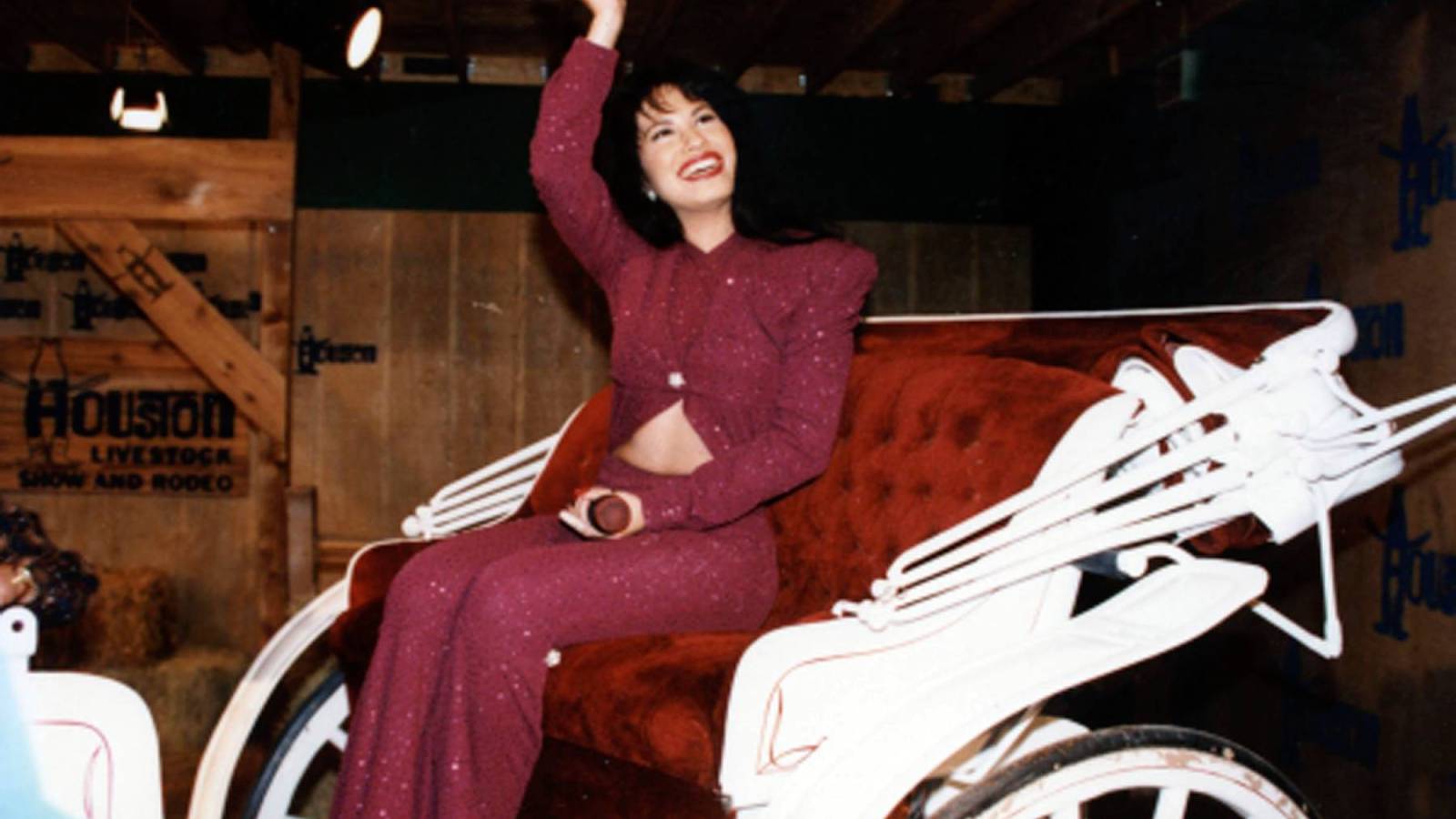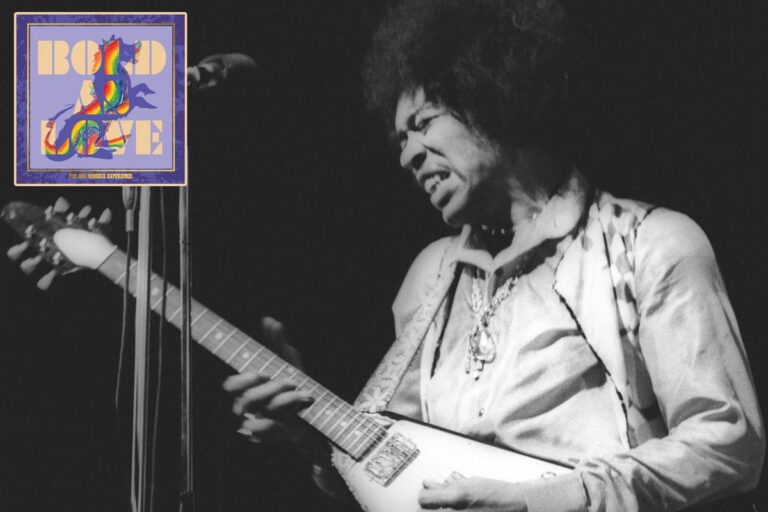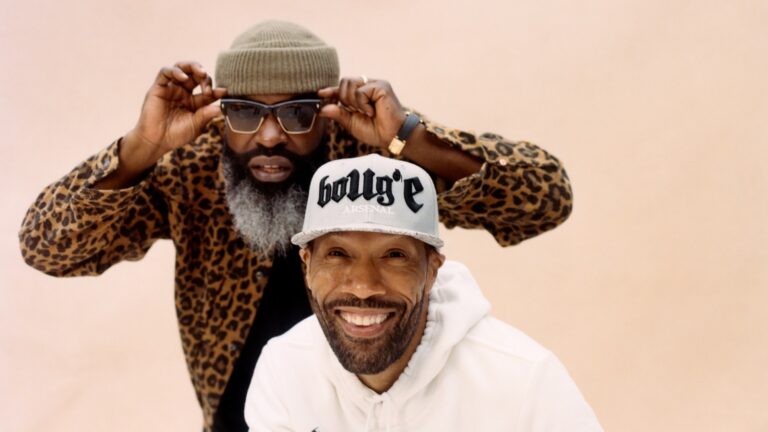In the 30 years since her death, Selena Quintanilla’s story has been told and retold dozens of times. Between the classic 1997 Gregory Nava biopic starring Jennifer Lopez and the 2020 Netflix series starring Christian Serratos, generations of fans have come to know the contours and edges of her rise to fame — the early years in South Texas with her family band, Selena y Los Dinos; their progression from local parties and nightclubs to concert venues across the U.S. and into Mexico; the self-titled debut album; and the string of hits and successes that followed. All of it earned her the title the “Queen of Tejano,” leading up to the album she hoped would allow her to cross over with English-speaking audiences, released less than four months after she was killed.
Through countless posthumous releases, collaborations, and tributes, Selena has become one of the most influential and well-known figures in Latin music history. And yet, the upcoming Netflix documentary Selena y Los Dinos manages to do what feels impossible: deliver a new perspective on Selena’s story — this time, in her own words. Rolling Stone has an exclusive first look at the trailer here.
The documentary, which is out on Netflix Nov. 17, premiered at Sundance Film Festival earlier this year, and later to an emotional hometown audience at SXSW in March. An intimate scrapbook of never-before-seen home videos, concert footage, and present-day interviews with her family and former bandmates comes together to paint a vivid portrait of Selena, not just as the superstar, but also the hard-working daughter, the teasing sister, the loving wife, the dedicated bandmate, and the ambitious young Mexican-American woman grappling with the weight of her success.
For years, Selena’s sister Suzette had kept a treasure trove of archival videos at the family’s Q-Productions offices in Corpus Christi. And though she’d never planned to share it, in the decades after her sister’s death, she wondered if they might serve as inspiration for future generations of Latinos. “I had always wanted to leave behind something more personal than what the Selena movie or the Netflix Selena series had to offer,” Suzette tells Rolling Stone. “This is a personal glimpse into our lives of us coming together as a family.”
Suzette and the family looked for filmmakers who could shape the footage into a cohesive narrative, and came across Emmy-Award winning director Isabel Castro.
After watching her 2022 documentary, Mija, which explored the beauty and sacrifice of being a first-generation daughter through the story of two young Latinas trying to break into the music industry, they reached out. “It was a surreal experience and an unbelievable honor,” Castro tells Rolling Stone.
Tasked with combing through mountains of footage, Castro spent two years poring over every cassette, VHS tape, and DVD in storage, tracking Selena’s rise, from her first-ever recorded performance to her transformation into one of Tejano’s biggest and brightest stars.
Captured in various stages of her life, new pieces of the singer fall into place: in a home movie, a young Selena with wild, frizzy hair trades jabs with her sister about their clothes; in an old interview, she admits she’s lost touch with her friends because she’s always on the road; footage filmed by Suzette documents the band’s big trip to Hollywood, where Selena beams before signing her first major record deal with EMI. “Going over all the videos of what our life was then brought on different emotions,” Suzette says. “Nothing will ever heal my heart, but it made me feel happy to be able to sit back and see what we created together and to realize our hard work paid off.”
The viewer also sees Selena studying Spanish, acutely aware of the pressures attached to her identity as a Mexican American performer. But just as crucially, we also see her bucking against the expectations placed on her as a Mexican American woman.
When one interviewer questions her description of herself as “dominant and aggressive,” Selena responds confidently in Spanish saying, “You have to be … There are a lot of men in this business, and if you can’t speak for yourself, they’ll run you over.”
In a story that is sometimes outweighed by its tragic end, Selena y Los Dinos manages to radiate joy by showing Selena as a human being, vibrating with energy, determination, and an infectious sense of humor. “For me, what makes me so emotional is that every time you see it, you want the ending to be different,” Castro says.
The director spoke with Rolling Stone about the making of the documentary, her relationship to Selena, and how she helps this film will add to the singer’s legacy.
When the Quintanilla family first reached out to you about this project, I’m assuming there were a million thoughts going through your mind. Did you have any fears or hesitations about signing on?
Oh my God, I had so many fears going in. First and foremost, because it’s just such a deep sense of responsibility to be entrusted with this archive and to be tasked with the decision of whether or not to include certain parts of it in this official documentary. But also, threading the needle between all these different facets of her story was really difficult.
What was your initial reaction to the idea of a Selena documentary?
When they first reached out, my first instinct was one that I think a lot of people have, which was “Why are we telling the story now? Why are we telling it again? What is the function of that?” So I was honored and excited, but I was also a little bit apprehensive. I didn’t know how we would be able to tell her story in a new way, which was my goal.
What was it that made you say yes?
As soon as I saw the archive, I realized not only that there was a way to tell the story in a new way, but I also realized that the family was at a point in their lives that they were ready to talk about it in a way that they never had before. With those two things combined, I thought we were going to make the film something completely special.
I also realized the importance of telling the story again for new generations, for new audiences that might not know her or her music. So for all those reasons, even though I had some initial questions and doubts, as soon as I went down to Corpus Christi to meet the family, I knew I wanted to do this film more desperately than anything I’ve ever wanted to do in my career.
What was your connection to Selena prior to making this documentary?
I mean, the movie was deeply inspiring to me. I’m Mexican, and I moved to the United States when I was a really young girl, and I grew up in New England in a town that was not really diverse. When I first saw the movie, it was this really seminal moment in the formation of my identity, where I saw somebody that spoke to me, and to what I was experiencing as a Mexican American. My connection to Selena really began with that movie, and I grew up watching it all the time.
In a lot of ways, the documentary feels like a perfect companion piece to the 1997 film. It touches on a lot of the same moments, but with the added insights from Selena, the family, and the band members themselves.
I watched the movie so many times over the course of digitizing the archive, doing research, and going into the interviews. It served as inspiration in that it takes a similar approach in not fixating on her death, and exploring the things that played out behind the scenes. The movie was also really significant for the family, so it provided a way for us to talk about and reference different points in their lives.
Now that the documentary is finished, it’s been really fun and exciting to go back to the movie and see the ways in which Selena is almost commenting on these different plot points from this narrative I grew up knowing by heart. I feel like the documentary is an opportunity to hear directly from Selena about her life.
The documentary doesn’t spend much time on Selena’s death, or her killer. Was that a conscious choice you made going in?
Right from the beginning, what I told the family is that I just wasn’t really that interested in her death. In my opinion, people get a little bit preoccupied with this story of how she died, and to me, it’s this totally nonsensical tragedy. It just wasn’t as interesting to me as getting a better understanding of the trajectory of her career, her life, and trying to understand who she was as a person through all of this footage.
Tell me a little bit about the archival process for this film. How much material were you sorting through, and how did you decide what you wanted to use?
This was the first archival film I’ve ever made, and I feel like I just jumped right into the deep end. Me and [producer J. Daniel Torres] ended up traveling to Corpus Christi over a dozen times. We added it up at one point, and it was over six months that we spent going through raw material, logging footage, and trying to find the best version of it. We transcribed every interview Selena ever did, from her earliest interviews, all the way until her untimely death. That was all over the course of two years, just screening the footage with Ricky [Vela, Selena’s former bandmate], who still works at Q Productions.
What were you looking for in these mountains of footage?
We wanted to find moments in her interviews that spoke to her emotional experience. It was really important to me that this story be told through the archive as opposed to being told through interviews. I wanted the interviews to provide supplemental and emotional context to what we were seeing. It wasn’t until we’d seen the entire archive and digitized it that we started interviews, so that was over two years into the process before we even brought cameras down. We wanted to have the story tracked, but I also thought it was really important that we build up a relationship with the family, and build a kind of shared understanding of what we wanted the film to be.
How did going over this footage change your understanding of who Selena was?
To me, what emerged during the process was Selena’s personality. I’ve seen videos of her performing, I’ve seen her interviews, and she was always so poised. Even from a young age, she was incredible at stepping onto a stage and just immediately turning on. But the moments that I felt closest to her were when you see her backstage, and you get a window into what she was really like. She was just really funny. When I tried to understand the charisma of Selena, because she really has this magnetism that is just impossible to turn away from, I think her humor is a really big part of it.
Over the years, there’s been one major voice “missing” from most of the interviews about Selena: her mother, Marcella. How did her participation in this documentary come about?
The interview with Marcella was so unbelievably special and unique, because she doesn’t like to be in front of the camera, understandably so. At first, she wasn’t sure whether or not she wanted to do an interview for this film, but one day she called us and said, “I’m ready. I want to do the interview.” It’s the first time she’s done an interview in almost 30 years, and it was shorter in comparison to the others in the film, but it was so incredibly powerful. That conversation was so authentic and it really came from her heart.
Selena’s relationship with Chris Perez is so important to understanding who she was, but their elopement also represents a challenging time for Selena and her family. How did you want to go about that?
The interview with Chris was so beautiful and so crucial. He was part of this moment in Selena’s life where she kind of went against her family’s wishes, and that created tension between her and her family. But I really genuinely feel now that they’re so close and it was important both to Chris and to the family that he was a part of this project. Their love story was ultimately such a big part of Selena’s story, and also of her growing older and making her own decisions.
In the documentary, we hear from the family directly about the elopement. They all seemed hurt about the way it happened, but all these years later, Suzette comes around saying she’s glad Selena didn’t wait, because “she got to experience love.”
Yeah, it’s a really beautiful line, because I think it also speaks to the fact that there’s so much love there for Chris. Even though it’s a fraught moment in the story at the time, it really lands in a place of love and respect for what they had.
Suzette and the Quintanilla family talked about this documentary being an opportunity to introduce Selena to new generations of fans. How do you hope the film plays a role in adding to her legacy?
The goal from the beginning was to hear from Selena herself. I think from watching the raw footage of her, you really get a sense of what she was feeling and what she was experiencing as this unbelievable professional trajectory was playing out, and as her star was growing and growing. I hope that what’s different with this film is that it gives people the chance to connect, on an intimate and emotional level, with Selena, her family, and their music.



